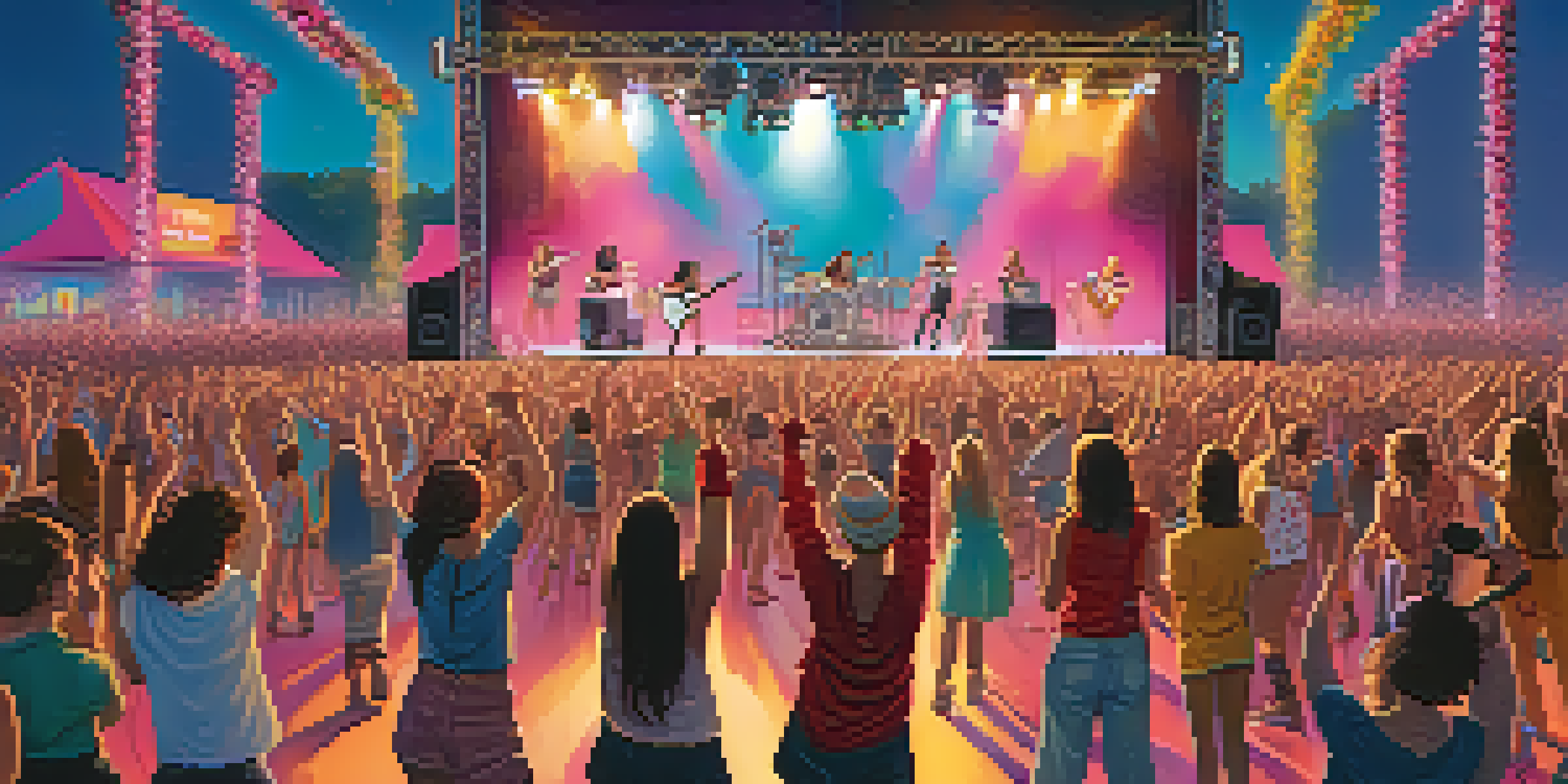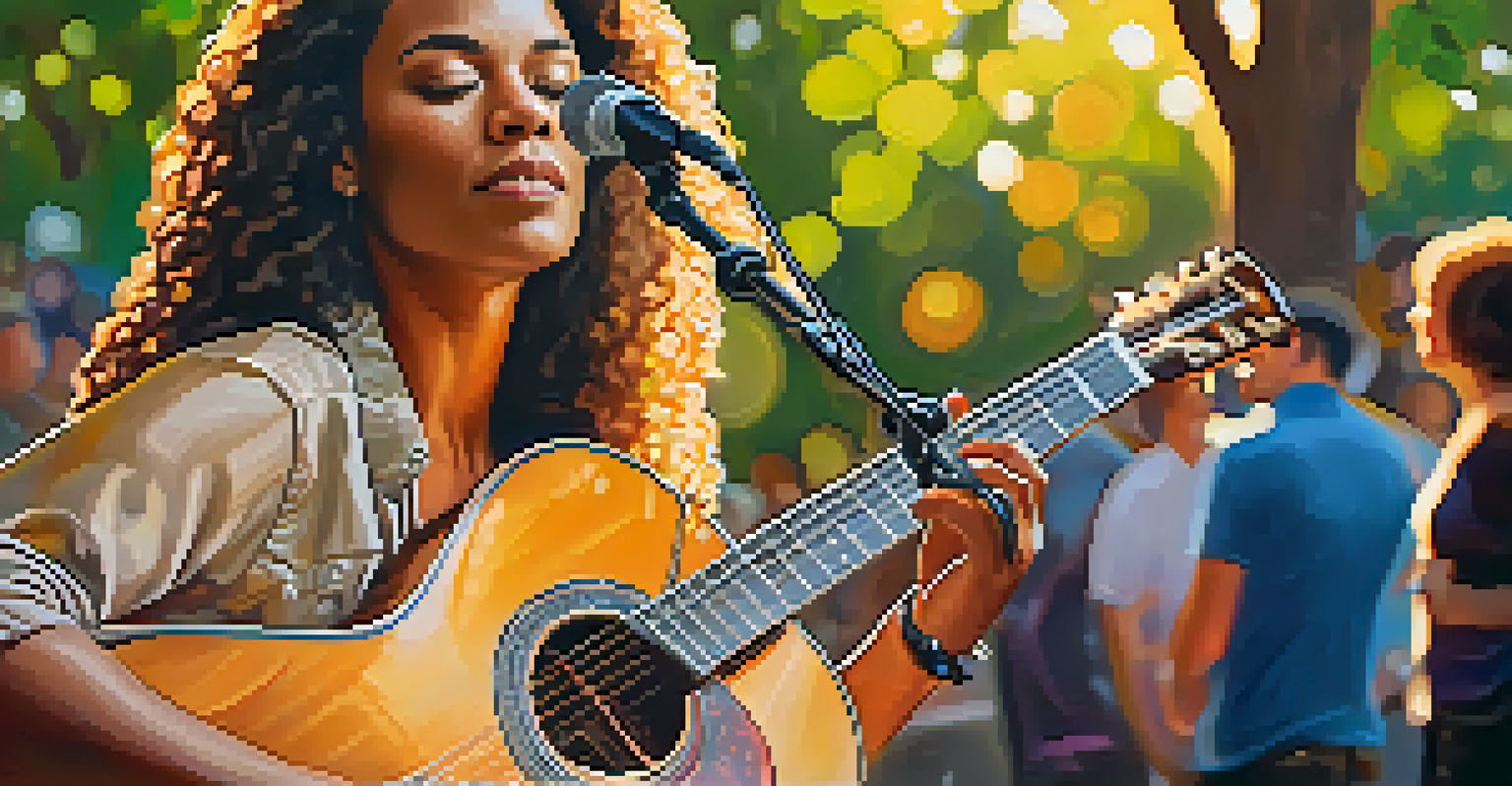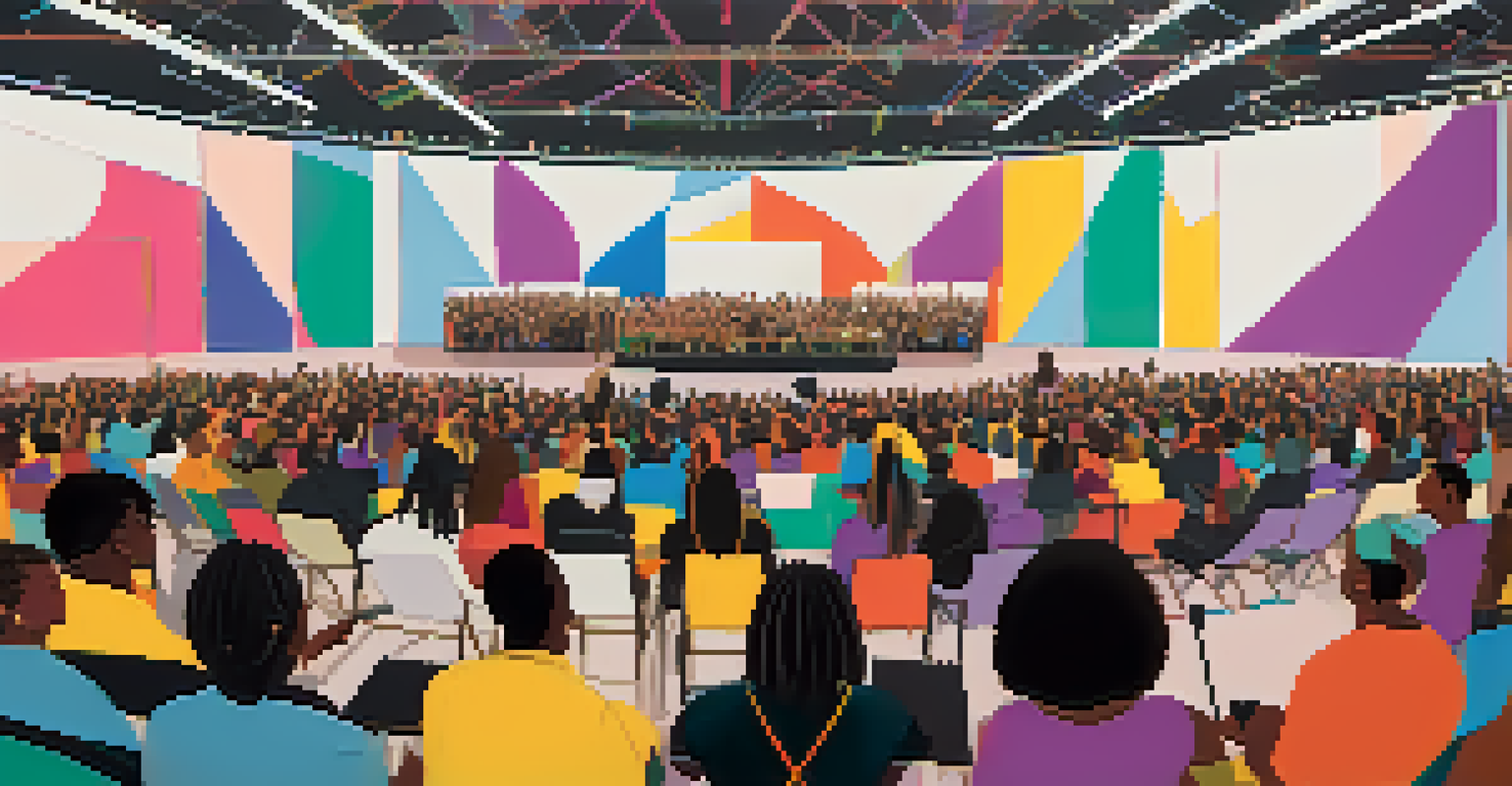Gender Dynamics in Live Music Performances and Festivals

Understanding Gender Representation in Music Events
Gender representation in live music performances has been a topic of increasing interest. Historically, male artists have dominated the scene, but the landscape is shifting. Today, we see more female artists taking the stage, challenging the status quo and inspiring new generations. This transformation reflects broader societal changes regarding gender equality and representation across various fields.
Music is a powerful tool for change, and when we amplify diverse voices, we create a richer cultural tapestry.
Festivals, in particular, are platforms where this representation is crucial. They showcase not just headliners but also a diverse range of performers, from emerging talent to established acts. When women and non-binary artists are given the spotlight, it opens doors for more diverse music styles and perspectives, enriching the overall experience for audiences. It's a win-win for everyone involved.
However, the journey is far from over. Many festivals still struggle with achieving gender parity. Organizers are increasingly being held accountable for their lineups, leading to a push for inclusivity that reflects the diversity of the music community as a whole.
The Impact of Gender on Audience Experience
Gender dynamics also play a significant role in how audiences experience live music. For many female concert-goers, safety and comfort are paramount concerns. Instances of harassment and inappropriate behavior can overshadow the joy of attending a live show. This has led to calls for more gender-sensitive approaches in event planning and security measures.

Moreover, the presence of female artists can profoundly influence the audience's experience. When women take the stage, it can create a sense of belonging and representation for female fans. This dynamic fosters a more inclusive environment, encouraging everyone to engage with the music and each other, regardless of gender.
Shift Towards Gender Equality in Music
There is a growing presence of female and non-binary artists in live music, reflecting broader societal changes towards gender representation.
It’s not just about the performers; it's also about how the audience interacts with one another. Creating a safe and welcoming space for all attendees can transform live music events into communal celebrations rather than exclusive gatherings, positively reshaping the overall atmosphere.
Challenges Faced by Female Musicians
Despite the growing presence of women in the music industry, female musicians often face unique challenges. Issues like pay disparity and limited access to opportunities continue to persist. Many women report feeling pressure to conform to certain stereotypes or expectations, which can stifle their creativity and authenticity.
Allyship is not just about being supportive; it’s about using your privilege to create space for others.
Additionally, female artists frequently encounter skepticism about their abilities, which can be disheartening. They may have to work twice as hard to prove themselves in a male-dominated industry, often facing scrutiny that their male counterparts do not. This challenge can be a barrier to entry for many aspiring musicians, discouraging them from pursuing their passions.
However, the tide is turning. With initiatives aimed at supporting women in music, including mentorship programs and networking opportunities, there's hope for a more equitable future. These efforts are essential to help bridge the gap and empower women to thrive in the live music scene.
The Role of Festivals in Promoting Inclusivity
Music festivals can serve as powerful platforms for promoting inclusivity and gender equality. By prioritizing diverse lineups, they send a clear message that all voices matter. Festivals like Glastonbury and Coachella have made strides in this direction, showcasing a mix of artists across genders and genres to create a more balanced representation.
Moreover, these events often incorporate panels and discussions on gender dynamics in music. By fostering conversations about representation and equality, festivals can raise awareness among attendees and artists alike. This creates a ripple effect, encouraging other events to follow suit and prioritize inclusivity.
Challenges Persist for Female Artists
Despite progress, female musicians still face significant challenges, including pay disparity and scrutiny, which hinder their careers.
Ultimately, when festivals champion diversity, they not only enhance their brand but also enrich the cultural landscape. This commitment to inclusivity can lead to a more vibrant and dynamic music scene that attracts broader audiences and fosters creativity.
The Influence of Social Media on Gender Dynamics
Social media has become a game-changer in how music is marketed and consumed, especially regarding gender dynamics. Platforms like Instagram and TikTok allow artists to connect directly with fans, bypassing traditional gatekeepers. This democratization gives female artists a chance to showcase their work and build their brands in ways that were previously difficult.
Additionally, social media serves as a tool for activism, allowing fans and artists to voice their concerns about inequality in the music industry. Hashtags like #MeToo and #WomenInMusic have sparked important conversations, driving change and holding the industry accountable. This connection creates a supportive community that can influence the broader music culture.
As female artists gain visibility and support through social media, they can inspire others to pursue their passions. This growing digital presence contributes to a more balanced representation in the industry, encouraging a new wave of talent to emerge and flourish in live music.
The Importance of Male Allyship in Music
Male allyship plays a crucial role in promoting gender equality within the music industry. Male musicians, producers, and industry leaders can use their platforms to advocate for female and non-binary artists. When they actively support their female counterparts, they help dismantle longstanding stereotypes and biases that have held the industry back.
Furthermore, male allies can challenge harmful behaviors within their circles and encourage more inclusive practices. Whether it's calling out unacceptable behavior at shows or advocating for diverse lineups in festival bookings, their voices carry weight and can lead to meaningful change. This collective effort is essential for fostering a culture of respect and equality.
Importance of Inclusive Music Festivals
Music festivals play a vital role in promoting inclusivity and gender equality by featuring diverse lineups and fostering discussions on representation.
Ultimately, when men step up as allies, it creates a more supportive environment for everyone. This collaboration can inspire other males to take action and create a music industry that is not only equitable but also richer and more vibrant due to its diversity.
Future Trends in Gender Dynamics in Live Music
Looking ahead, the future of gender dynamics in live music appears promising yet challenging. As awareness grows and conversations continue, we can expect to see more initiatives aimed at promoting gender equality. This includes mentorship programs, grants, and more inclusive festival lineups, all working towards a more balanced representation.
Emerging technologies, such as virtual reality and streaming platforms, also have the potential to reshape the landscape. These tools can provide new opportunities for female artists to showcase their work and reach wider audiences. By breaking down geographical barriers, technology can amplify diverse voices and foster a more inclusive music community.

Ultimately, the ongoing dialogue around gender dynamics in live music will shape the industry's future. As more people advocate for change, we can hope to see a more equitable environment where all artists can thrive, regardless of gender.